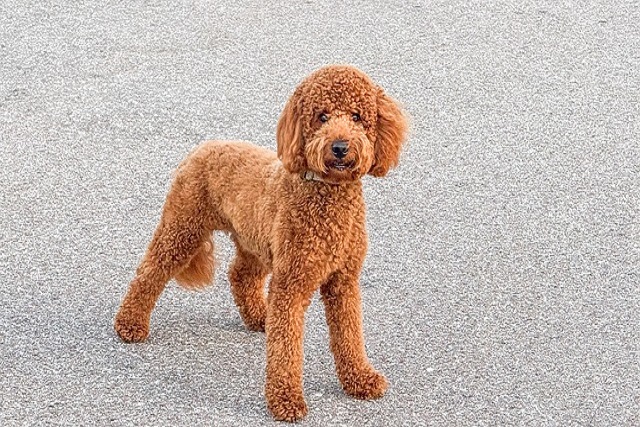
What is glaucoma in a dog?
You might notice your dog squinting more at mealtime or avoiding bright sunlight—these small changes could be early signs of a serious eye condition.
In the world of dogs, every breath is a tribute to life, and every sniff is a love for the world. However, when these lively little creatures encounter respiratory problems, as their closest friends and family, we inevitably feel an indescribable worry and heartache in our hearts. At such moments, the correct nasal irrigation method can not only alleviate the discomfort of dogs, but also help them recover their health and regain vitality.
Firstly, we need to recognize the importance of nasal irrigation for the health of dogs. Nasal flushing can help remove secretions, foreign objects, and pathogens from the nasal cavity, reduce inflammation, and improve breathing. However, not all flushing solutions are suitable for dogs to use, and incorrect choices may cause irritation or injury to the dog's nasal cavity. Therefore, choosing the appropriate flushing solution is the first step in ensuring the health of a dog's nasal cavity.
The physiological structure of the canine nasal cavity determines the specificity of flushing. Their nasal mucosa is covered with dense olfactory receptors, accounting for 12% of the brain volume, while in humans it is only 0.01%. This highly developed olfactory system makes dogs exceptionally sensitive to foreign objects. We found in the laboratory that the frequency of cilia swinging in the nasal cavity of dogs is 2.3 times that of humans, which means that any irritating liquid can trigger a strong stress response. More importantly, the nasolacrimal duct in dogs has stronger connectivity with the sinuses, and incorrect flushing methods may result in fluid reflux to the middle ear or lungs.
Physiological saline is one of the most commonly used nasal irrigation solutions. Its composition is simple, and its osmotic pressure is similar to that of biological fluids, resulting in less irritation to the nasal mucosa. For dogs, using 0.9% saline solution for nasal flushing can gently clean the nasal cavity, alleviate nasal congestion and inflammation. However, it should be noted that the concentration and temperature of physiological saline need to be appropriate, as too high or too low concentration and temperature may cause discomfort to the dog's nasal cavity.

For inflammatory rhinitis, veterinarians may prescribe flushing solutions containing antibiotics or corticosteroids. This type of medication must be strictly used according to medical advice, as long-term use may lead to nasal mucosal atrophy. In our follow-up study, dogs that strictly followed the course of treatment with specialized flushing solution had a 42% higher recovery rate than those who stopped medication at will. It should be emphasized that there is a great risk associated with self prepared flushing solution. We have previously treated cases of nasal burns caused by the use of homemade saline solution (with high concentration).
In addition, there are some nasal irrigation solutions specifically designed for dogs on the market, which often contain additional ingredients such as antibacterial or anti-inflammatory agents that can more effectively alleviate nasal problems in dogs. When choosing these products, we should carefully read the product instructions to ensure their safety and suitability, and follow veterinary advice.
The correct operating method is crucial when using nasal irrigation solution. Firstly, ensure that the dog is in a quiet and relaxed state, avoiding rinsing when the dog is nervous or struggling to reduce unnecessary stress and potential harm. Secondly, use a specialized nasal irrigator or dropper to gently drip the flushing solution into the dog's nostrils, being careful not to let the flushing solution directly impact the nasal mucosa to avoid discomfort. After rinsing, gently massage the dog's nose bridge to help distribute and absorb the rinsing solution better.
In terms of prevention, it is crucial to regularly check the characteristics of nasal secretions. Clear watery secretions may indicate allergies, while purulent secretions often indicate infections. We recommend cleaning the outer side of the nasal passage with moist gauze every month. This simple care can reduce the accumulation of secretions by 60%. For short nosed dog breeds (such as bulldogs), due to narrow nasal passages, special attention should be paid to nasal health.
When we face a nervous dog with a flushing device in hand, every gentle movement conveys love. The eyes of those furry children who were once depressed due to nasal congestion, restored to vitality after proper care, are the best reward for our profession. Let us use scientific knowledge and gentle hands to protect these little creatures who explore the world with their noses. When they lightly rub their wet noses against your palm, you will understand that all the effort is worth it.

You might notice your dog squinting more at mealtime or avoiding bright sunlight—these small changes could be early signs of a serious eye condition.

Let’s set the scene: It’s a sweltering Phoenix afternoon—105°F outside—and you rushed your 2-year-old Lab mix, Cooper, on a quick walk to “get it over with.”

Let’s get real: You’re in your Miami apartment, watching your 3-year-old Corgi, Loki, struggle to climb the stairs to your second-floor unit.

Many dog owners brush off occasional scratching as just “dog behavior,” but persistent itching often signals something more—like a food allergy.

You might first notice your dog scratching more than usual—chewing at their paws until the fur looks thin, or rubbing their face against the couch nonstop.

Let’s be real: You’re standing in your Chicago apartment, watching your 3-year-old Beagle, Max, huff and puff just to climb onto the couch.